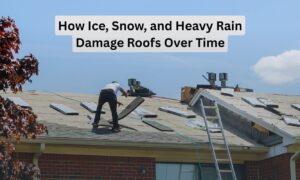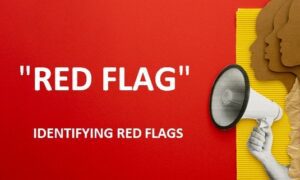One of the most often used finishing materials for structures is stucco. Because it is long-lasting, attractive, and versatile, it is well-liked by many. But like anything else, stucco requires regular maintenance and inspection.
Depending on several factors, the cost of a stucco inspection might vary. It is essential that property managers and owners are aware of these items to budget for the expenses. This article discusses seven key factors that influence the cost of a stucco inspection.
When choosing between stucco inspections, property owners may make informed decisions by taking into account the following elements.
1. Size and Complexity of the Structure
The cost of a stucco inspection can be significantly impacted by a building’s size and complexity. A large structure with stucco will require more time and work to evaluate thoroughly. This involves examining the building’s exterior and any ornate patterns or curves that might complicate the assessment.
Buildings can occasionally have intricate floor plans or be quite tall, with several stories. To properly inspect these sorts of structures, specialized tools, and methods may be required.
For instance, to thoroughly examine a structure with several stories, inspectors may need to make use of tools like scaffolding, lifts, or even drones. Learn more about stucco inspection cost to understand better how these elements and required equipment might affect your inspection costs.
2. Type of Stucco System
Image source
The cost of an inspection might vary depending on the type of stucco system. Various stucco systems exist, such as Exterior Insulation and Finish Systems (EIFS), one-coat stucco, and classic three-coat stucco. Every system is unique and may have issues that require certain checks to be made.
- Three-Coat Stucco: This traditional technique is well known for its strength, but it is susceptible to cracking with time. Therefore, it must be constantly inspected.
- One-Coat Stucco: This technique is more accessible to apply, but because it might have weak places, it may require additional inspections.
- EIFS: Water intrusion issues are more familiar with this type of stucco. Thus, a more thorough inspection may be required and may incur additional costs.
3. Condition of the Stucco
It is critical to consider the stucco’s current status. If the stucco looks in good shape and exhibits no symptoms of degradation, the evaluation will be less extensive and less expensive. However, the examination will be more thorough, and more time will be required to establish whether the stucco has moisture damage, cracks, bulges, or discolorations.
When there is a moisture or structural damage risk, inspectors may need to use advanced devices such as moisture meters, infrared cameras, or borescopes. Although the examination becomes more expensive, this equipment can reveal hidden problems in the stucco.
4. Accessibility of the Stucco
The ease of access for inspectors to the stucco surface may influence inspection costs. A structure with easy access to all stucco surfaces, such as a single-story home or one with minimal obstacles, would often spend less for the inspection.
A thorough examination, on the other hand, will take more time and specialized equipment if the facility is in a difficult-to-reach position, such as a high building, one with many plants, or one with uneven terrain. This may need the leasing of equipment such as scaffolding or lifts, which enhances the examination costs.
5. Geographic Location
Depending on where the property is located, a stucco inspection might cost different amounts. Labor costs, the number of certified inspectors, and local market conditions can all affect the price. In an expensive metropolis, for instance, where housing is more costly and skilled labor is more in demand, the cost of a stucco inspection is more than in a rural area.
Moreover, the climate in many places could accelerate the deterioration of stucco. Conditions like high humidity, a lot of rain, or exceptionally high or low temperatures could be examples of this. In order to guarantee that any weather-related issues are resolved, inspections in some areas might need to be carried out more frequently or with more attention.
6. Inspection Scope and Methods
The inspection’s scope and methodology may vary, influencing the cost. Usually, it is less expensive to quickly inspect the stucco surface for visible problems. However, if you’d want a closer look, it may consist of.
Checking for Moisture: Using special tools to find out how much water is in the stucco system to uncover any hidden damage caused by water.
Infrared Thermography: Using infrared cameras to locate thermal anomalies or places where moisture ingress has occurred.
Borescope Inspections: Putting a tiny camera into the stucco system to check what’s behind it without making a big mess.
7. Inspector’s Expertise and Reputation
The inspection cost may vary depending on the inspector’s experience, qualifications, and level of recognition. Ideally you’d want someone whos’ been in a relevant field like community clean up or a similar field. Expert stucco inspectors may charge extra for their services. Their expertise may help detect issues earlier and save property owners money in the long run, even though they may be more expensive.
Furthermore, well-known and established inspection firms may request higher fees since their track record of excellent work and public confidence support them. While hiring a less experienced inspector at a lower cost could seem like an intelligent option, it’s crucial to consider the potential dangers and benefits.
Bottomline
Managers and owners of real estate must understand the factors that influence the cost of stucco inspections. Property owners may ensure they receive an in-depth examination of their stucco quality by closely examining these variables and working with a reputable inspector. By doing this, they can protect their investment and ensure the structure remains sturdy.



































